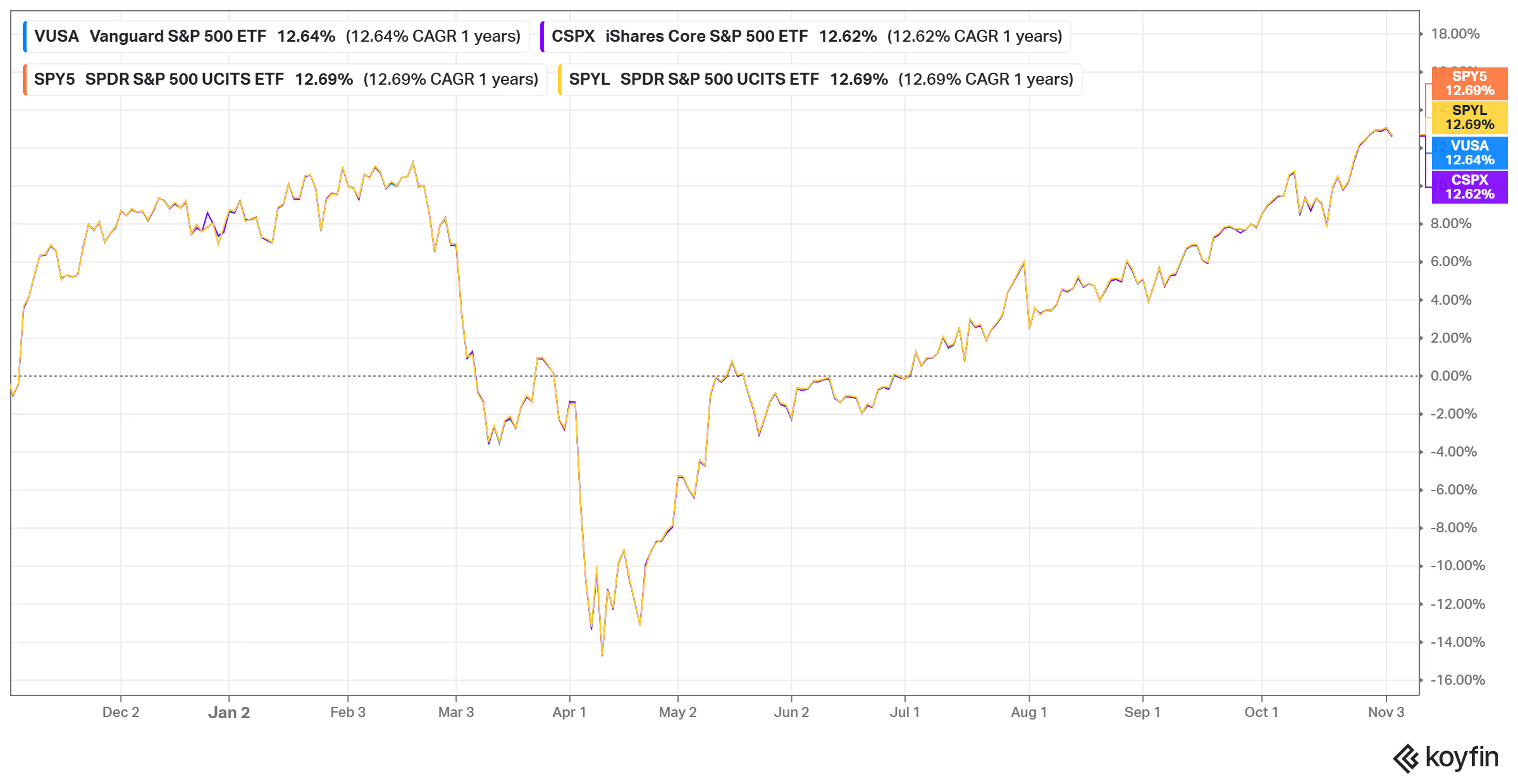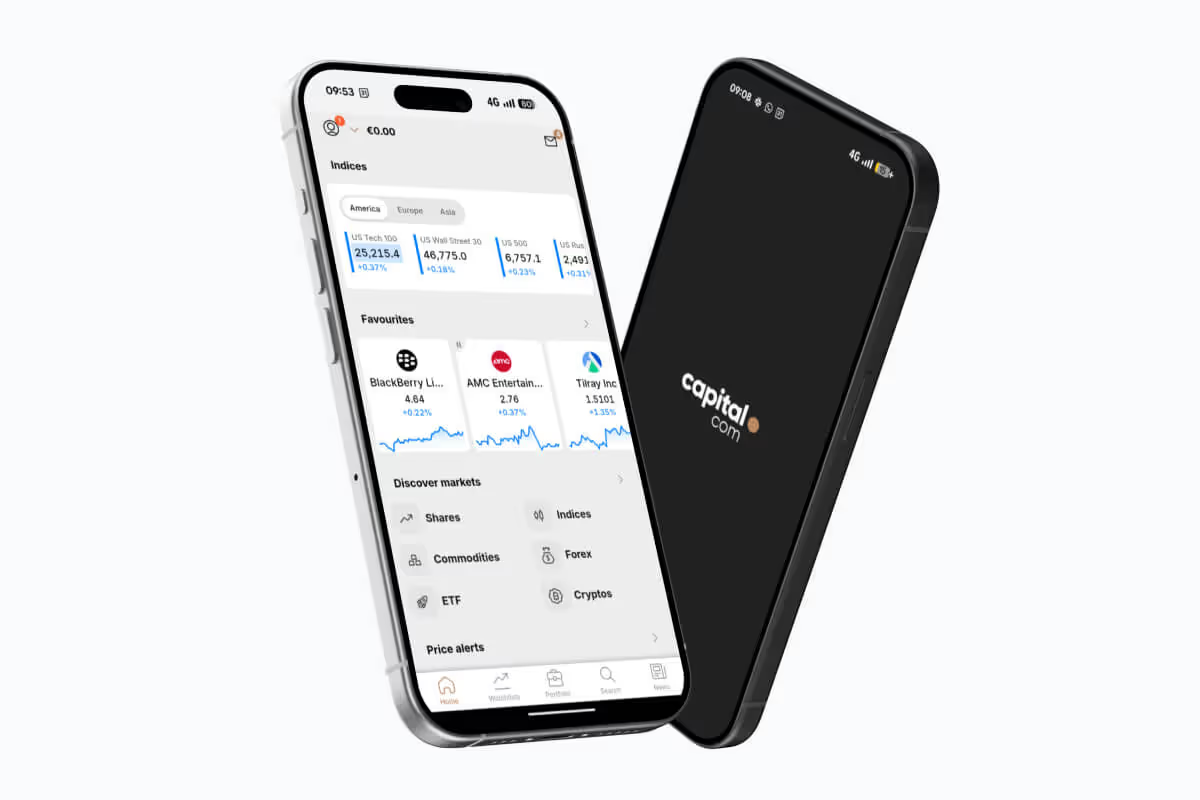Best S&P 500 ETFs in Europe in 2025 (& How to invest)



The S&P 500 is the most recognised stock market index in the world. It allows you to gain exposure to the leading 500 U.S. companies, offering diversification and long-term growth potential.
For European investors, you can only invest in European-based S&P 500 ETFs (explained below), which provide a simple and cost-effective way to access the index. But with multiple ETFs available, which one is the best?
In this article, we’ll explore the best S&P 500 ETFs available in Europe, compare their fees and performance, and guide you on investing step-by-step.
Best S&P 500 ETFs in Europe
We have selected the following ETFs based on their liquidity, fees, size, replication method, and use of income. We will organise into two tables:
Table 1:
Table 2:
Each ETF has different tickers. We decided to choose one of them and analyse it for simplicity reasons. Nonetheless, we encourage you to go to justetf.com, search for each ETF using the ISIN code, select it and look for the tab “Stock exchange”. There, all tickers will be presented.
All the ETFs presented are UCITS compliant. What does this mean?
UCITS-compliant ETFs adhere to the Undertakings for the Collective Investment in Transferable Securities (UCITS) regulations, a set of European Union (EU) investment fund standards. These regulations are designed to protect investors and ensure fund transparency, making UCITS ETFs safer and more accessible for European retail investors.
UCITS ETFs domiciled in Ireland or Luxembourg often benefit from reduced withholding tax rates on dividends from U.S. stocks (15% vs. 30% for U.S.-domiciled ETFs).
Moreover, if you try to buy a U.S. domiciled ETF (like VOO or SPY), European brokers will block your purchase due to MiFID II regulations (you can’t invest in them).
How does their performance compare?
As you can see, they present a similar behaviour, which means that all of them are correctly tracking the movements of the S&P 500 (in technical terms, it means they have low “tracking error”). Please note the 1-year return shown is the total return (including the dividends):

What methodology did you use for the ETF selection?
1. Size
The overall fund size should also be taken into consideration. The size of an ETF can impact the likelihood of fund liquidation. Smaller funds (less than 100 million euros in size) generally run a higher risk of being liquidated than larger funds. In such a case, the fund will sell all its holdings, settle obligations and distribute the remainder to the fund holders.
In our case, there is no such problem. The SPDR S&P 500 UCITS ETF is the lowest-sized ETF (Acc), which manages over 6 billion euros.
2. Fees (TER)
Asset managers like BlackRock (iShares), Vanguard and State Street Global Advisors charge a small annual fee from the fund’s assets. A lower fee will mean lower costs for you and, consequently, higher returns on our investments.
We have selected the ones with the lowest costs: 0.03% and 0.07%. For example, a €100 investment would only incur an annual cost of €0.03 or €0.07, depending on the ETF you should use.
3. Replication method
The ETFs can track the S&P 500 in two ways:
- Physical replication: This means the ETF will try to buy the underlying assets in the index.
- Synthetic replication: this means that the ETF uses financial derivatives to replicate the performance of the index.
The underlying companies comprising the S&P 500 are very liquid, and thus, physical replication is preferred as it does not incur any additional costs or risks related to derivatives. All the ETFs suggest have physical replication.
4. Use of Income
Apart from their product structure, the ETFs also distinguish between themselves in the following terms:
- Accumulating ETFs where the ETF reinvests the dividends it receives from the companies included in the index that decide to make that distribution. This will dictate a higher price for the ETF when compared to an identical distributing ETF, and, in some countries, it is tax advantageous because since the dividends are kept inside the ETF, you are not required to declare that amount.
- Distributing ETFs gives you on a regular basis (usually quarterly) the dividends that companies distribute. So, you will receive that amount directly in your brokerage account. Here, you will have to declare the dividends received.
Which one is better? There is no “correct” answer. It all comes down to your preferences. Do you plan to withdraw your investment in a 20-year time horizon? Maybe an accumulating ETF does a better job. Do you want to earn some regular income? Well, in that case, a distributing ETF will be the most appropriate choice.
Our S&P 500 ETF suggestion includes both options.
5. Hedging
ETFs can use financial derivatives to protect against currency fluctuations. This comes at an additional cost but might protect you against large currency swings. Our top 4 ETFs are all “unhedged” since we believe that over the long-term, currency fluctuations offset each other over time.
Which ETF broker should you choose?
Having selected one of the above ETFs, you need to find a broker where you can invest! To accomplish this, we have made the following summary:
- Interactive Brokers: Best broker overall
- Freedom24: Best for a variety of global ETFs
- DEGIRO: Best for low-cost ETF trading
- XTB: Best for commission-free ETFs investing in some European countries
- Lightyear: Best emerging low-cost broker in Europe
Here is a summary table of the fees, minimum deposit and regulators of each broker in the same order:
How to invest in an S&P 500 ETF (step by step)
If you have found an online broker that suits your needs, managed to open an investment account, and made the initial deposit, you are all set to buy one of the ETFs replicating the S&P 500! All you have to do is find the ETF within your chosen broker and place a buy order.
For this example, we will show how to invest in the iShares Core S&P 500 UCITS ETF (CSPX) in the broker DEGIRO.
- Search for “CSPX” in the DEGIRO search bar:

- Click “B” (buy): A new window will appear on the right side of your screen with all the details you need to fulfil: the order type (limit price in this case) and the number of shares you want to buy.

- Click “Place Order”: All the details will appear (including the costs), and you are ready to trade by selecting “confirm”:

Check all ETF-related cost on DEGIRO here.
Video summary
Bottom line
UCITS-compliant ETFs provide regulatory protection, tax advantages, and accessibility through European brokers.
When selecting the best S&P 500 ETF, key factors include fees (TER), fund size, replication method, and income distribution (accumulating vs. distributing). Our ETF selection offers low costs, high liquidity, and strong track records.
To invest, choose a reliable broker (such as Interactive Brokers, DEGIRO, or XTB), open an account, deposit funds, and buy your chosen ETF.
By staying invested long-term, avoiding high-fee ETFs, and selecting the right fund structure for your needs, you can maximise returns and build wealth efficiently through the power of the S&P 500.





